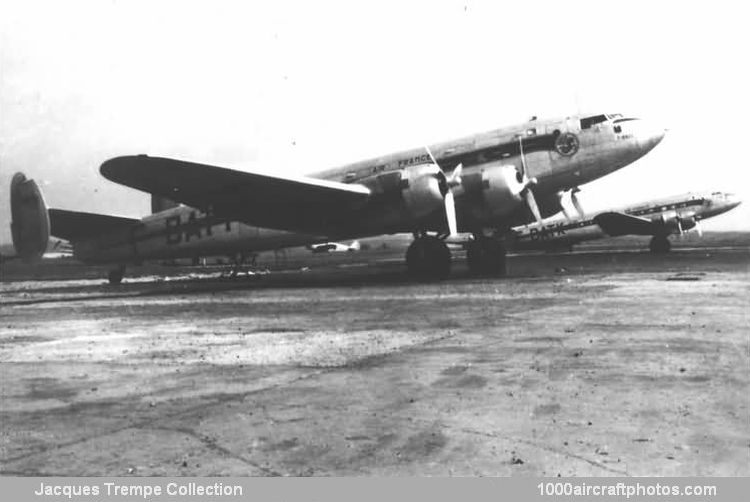04/30/2010. Remarks by Johan Visschedijk: "The in 1936 formed Société Nationale de Constructions Aéronautiques de Sud-Est (SNCASE) received in 1941 a French Government order to construct a batch of the low-wing four-engined S.E.161 airliners.
Capable of transporting thirty-three passengers, it was derived from the Bloch 161, the prototype of which had flown in September 1939, registered as F-ARTV. France entered WW II on May 10, after the Armistice in June 1940, the Vichy government permitted the continuation of the development and in 1941 preparations were made for series production.
As it turned out, the course of the war meant that production was delayed, the first airliner flew not until September 17, 1945, by then designated Languedoc. A total of 100 aircraft produced, of which 40 were delivered to Air France, 5 to LOT Polish Air Lines, 10 to the Aeronavale (Navy), a number where used by the STAé (Service Technique de l'Aéronautique, a department of the Air Ministry), while the balance went to the l'Armee de l'Air (AF).
In service, the Languedoc was troubled by the problems of its 1,150 hp Gnome & Rhône 14N fourteen-cylinder air-cooled radial engines and the fleet was soon re-engined with 1,200 hp Pratt & Whitney R-1830-S1C3G Twin Wasps. In practice, the Languedoc was very much an interim aircraft for Air France and was soon replaced by the DC-4 with the S.E.161s passing on to Air Liban of Libanon, Aviaco of Spain, and Misr of Egypt. A number of aircraft were used as flying test beds for engines and equipment."
